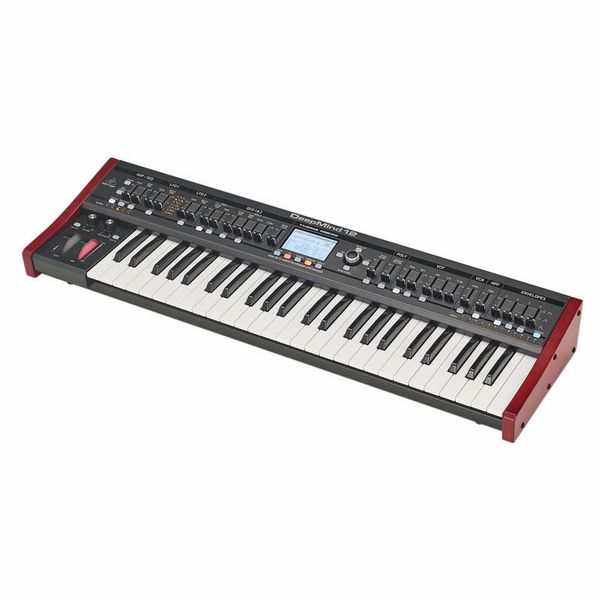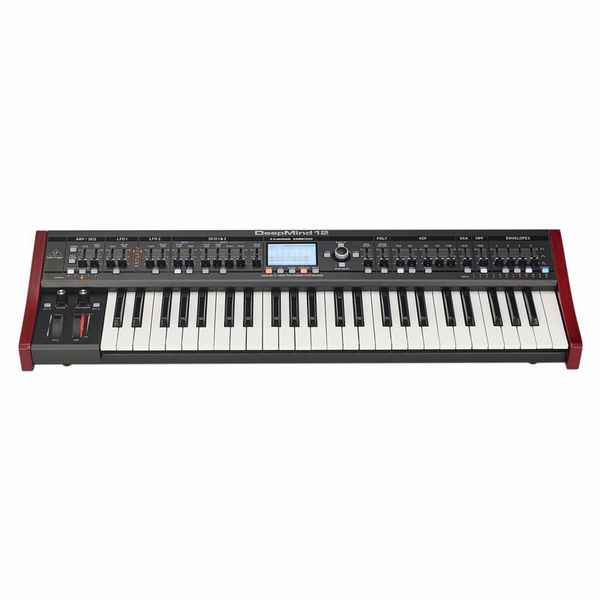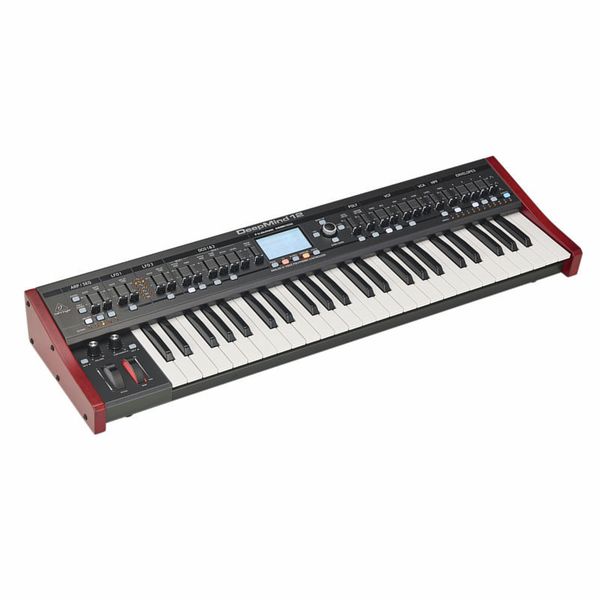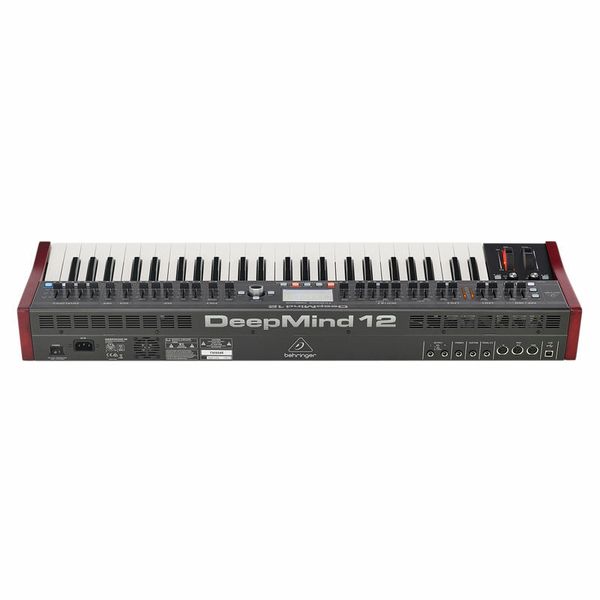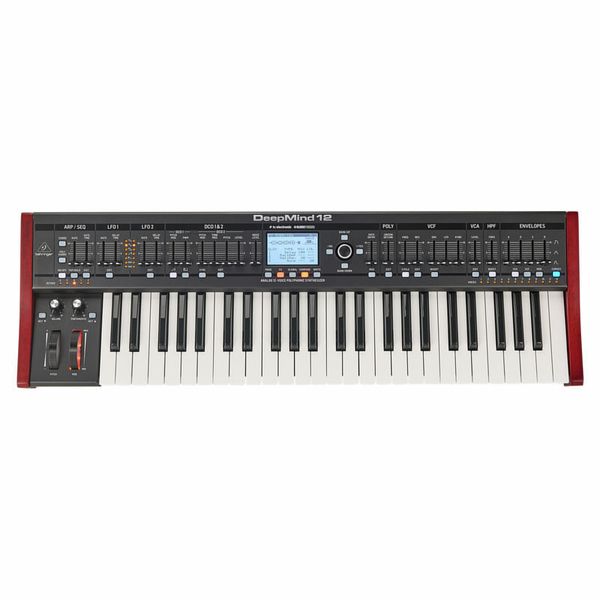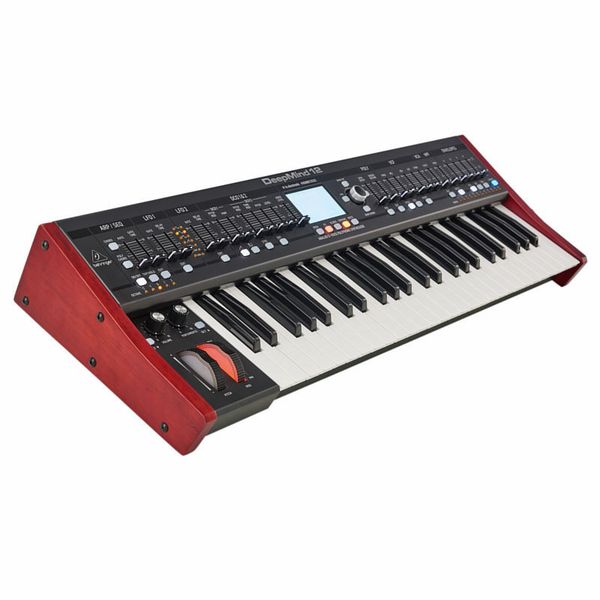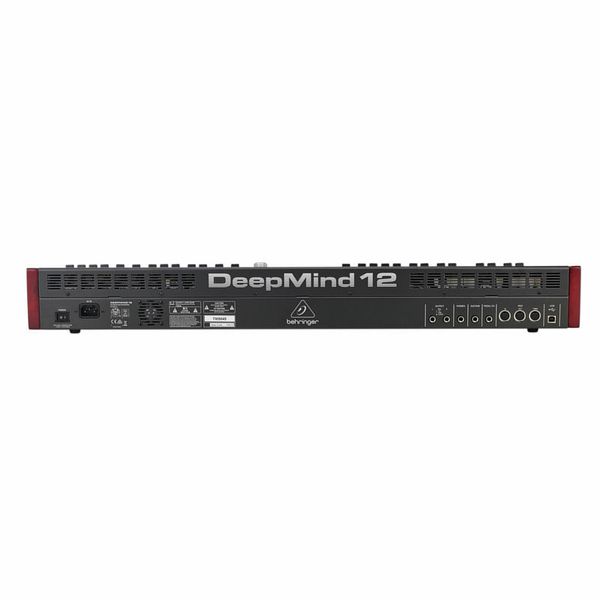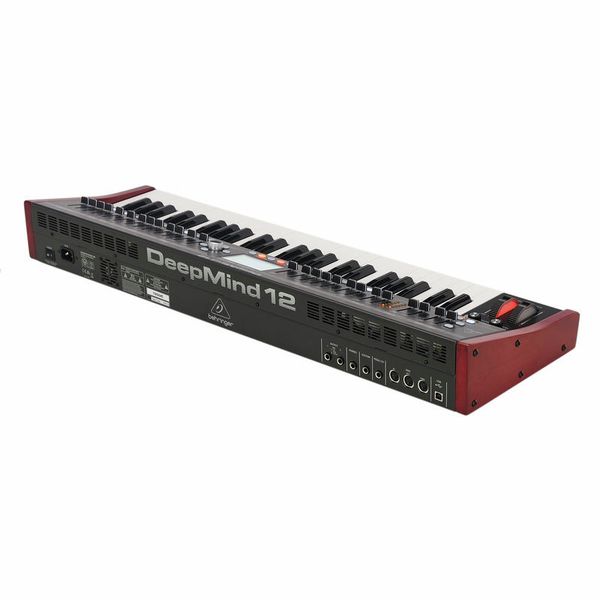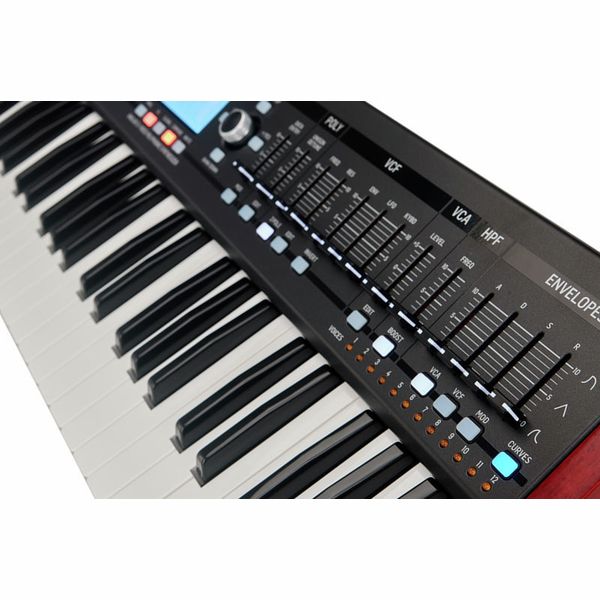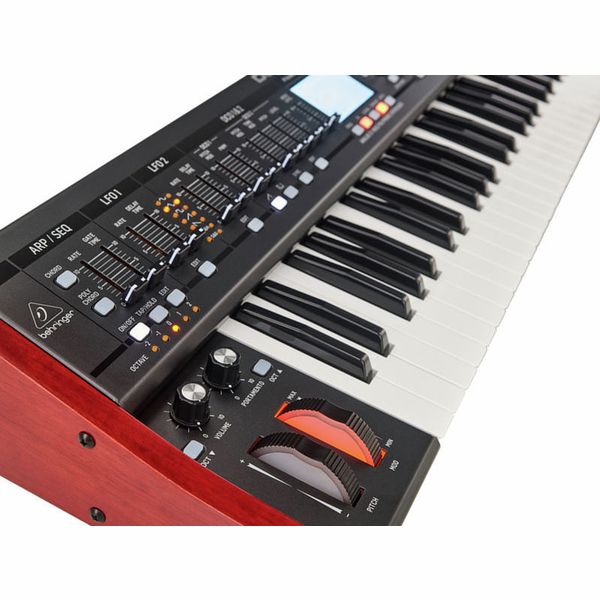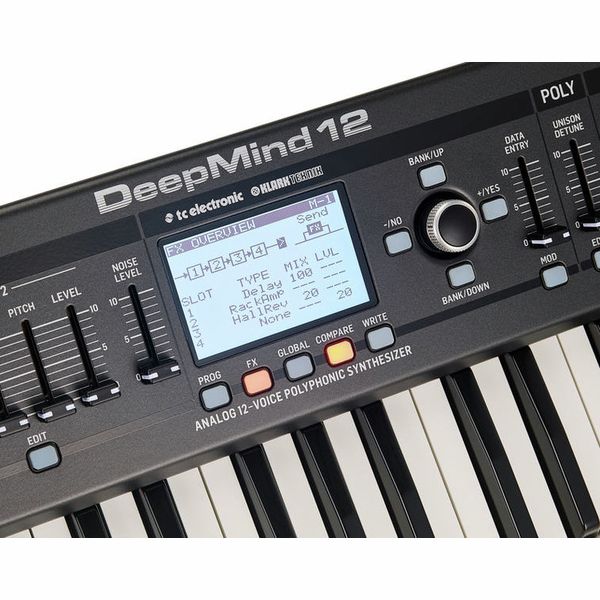The DeepMind has quite an ingenious design. Each voice is quite simple, but it is capable of surprising results. This synth's unique character is shown with the unison modes, which, with "uni voice" as a mod source, go well beyond the usual "thicken the sound" function of most other synths. For example, go to unison-2 or unison-3, set a mid-resonance 2-pole filter and map uni voice to filter frequency for formant-like "dual filter" sounds. For this reason I would definitely recommend against the DeepMind 6: you really want all 12 voices, especially since you need unison-2 just to get two sawtooths.
The osc section is limited. Osc 2's tone mod is quirky but combined with sync can make some interesting sounds. It would be great to have more waveforms on both oscillators but at this price the engineers obviously had to make some careful decisions and I think they've made a very unique, characterful instrument.
The filters sound fantastic at all resonance settings and are very versatile. At high resonance the low end largely disappears and it behaves more like a band-pass filter, which is actually very useful despite any comments of the DeepMind sounding "thin" (if all your synth sounds are "fat" then your mix will be pure mud anyway).
Admittedly, this synth sounds a bit dry with no FX, moreso than other synths. This is where the excellent FX section comes in. It lets you stack four effects with various routing options, some with feedback. You can do four reverbs in series, four band pass filters in parallel, whatever. The reverbs don't reach Strymon territory but sound great. There's no shimmer reverb but you can make one by putting a pitch shifter in the reverb feedback path. The two multi-band distortion/drive effects are also very versatile. Most FX parameters are mappable in the mod matrix, so you can e.g. dump the reverb buffer when playing a new note. In this way, the FX section becomes part of the instrument and not just an extra, and contributes to the synth's unique character and sound.
The DeepMind has lots of little features that leave you wondering why synths three times the price lack. Sostenuto mode. Favourites list. There's a "MIDI soft-thru" mode that relays MIDI messages from MIDI in to MIDI out (in addition to the usual MIDI thru port). This is a great feature not found on many keyboards. It means you can connect a sequencer to MIDI in, and MIDI out to another synth, so the sequencer can sequence both synths and you can play the other synth with the DeepMind's keyboard.
The arp is comprehensive with custom patterns (sadly no ratchet or chance).
The envelopes have fully adjustable curves - even the sustain portion has a "curve" parameter that acts like a second decay or attack after the main attack/decay. The envelopes are loopable, syncable, slewable, delayable and can be phase-distributed across voices. Almost everything is a mod destination, including env shape and curves, pan, porta time, drift, arp gate, FX params and other mod slots. Hold mod and wiggle a slider/press a button to set mod source/dest. It really feels like a lot of attention to detail was put into this synth. Some of these options require you to open a menu to get to them, but it's really not bad at all. Most sound shaping and adjustment can be done with the main sliders on the panel.
Build quality seems great: the case is all metal. I think the whole thing looks fantastic and a bit retro. The screen is packed with useful info and visual representations of envelopes etc. The screen could be a bit faster to update - it looks blurry when scrolling quickly through favourites.
I think my biggest complaint has got to be the keybed. While it's workable, the black keys are much less sensitive to velocity and aftertouch making playing uneven. Seems like there's quite a bit of randomness in the velocity response, even on the same key. Also, the keys sometimes feel a little sticky: sometimes they won't start moving until given enough force, then it unsticks. It's not a lot of force that's needed, but adds to the uneven playing experience. It's definitely usable but if you're all set in the keyboards department, definitely consider the desktop version (DeepMind 12D). Also another octave would be appreciated.
Other criticisms: there are only 8 mod matrix slots (odd, because it's all in software). You'll never have enough. Although do note that many basic mods don't need the mod matrix: LFOs or envs can be routed to PWM, pitch mod or filters, with mod wheel or aftertouch control, without the mod matrix.
Oscillator 2 level, noise and HPF mod destinations are global and not per voice (this is clearly a design trade-off as per-voice control of these would need more circuitry).
There's a high pitched whine in the audio path. This is normally not noticeable on the line out unless you introduce gain (either in the FX section or externally) but you might want to use a noise gate when recording. (Interestingly there's a noise gate in the FX section. I wonder why that's there...) The whining is much more noticeable on the headphone port, however, and can be a bit irritating.
Another minor annoyance: osc 2's tone mod parameter gets modified by the "param drift" option (separate from "osc drift"), which introduces bell-like tones into osc 2 even if you want to just use it as a square sub-oscillator. This limits the usefulness of "param drift".
Overall, great unique synth with lots of details. Definitely a keeper, but not without a few warts. Definitely worth considering the desktop version if you have enough keys.



